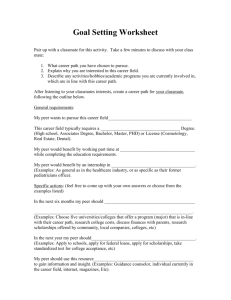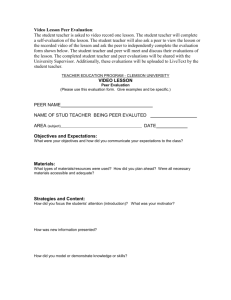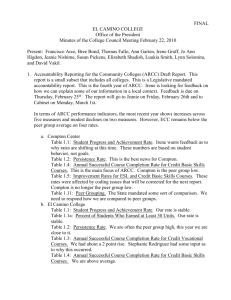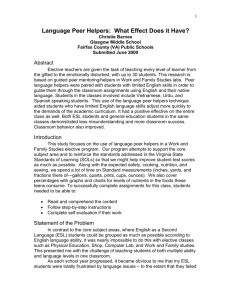Writing Lesson Plan - Georgetown Digital Commons
advertisement
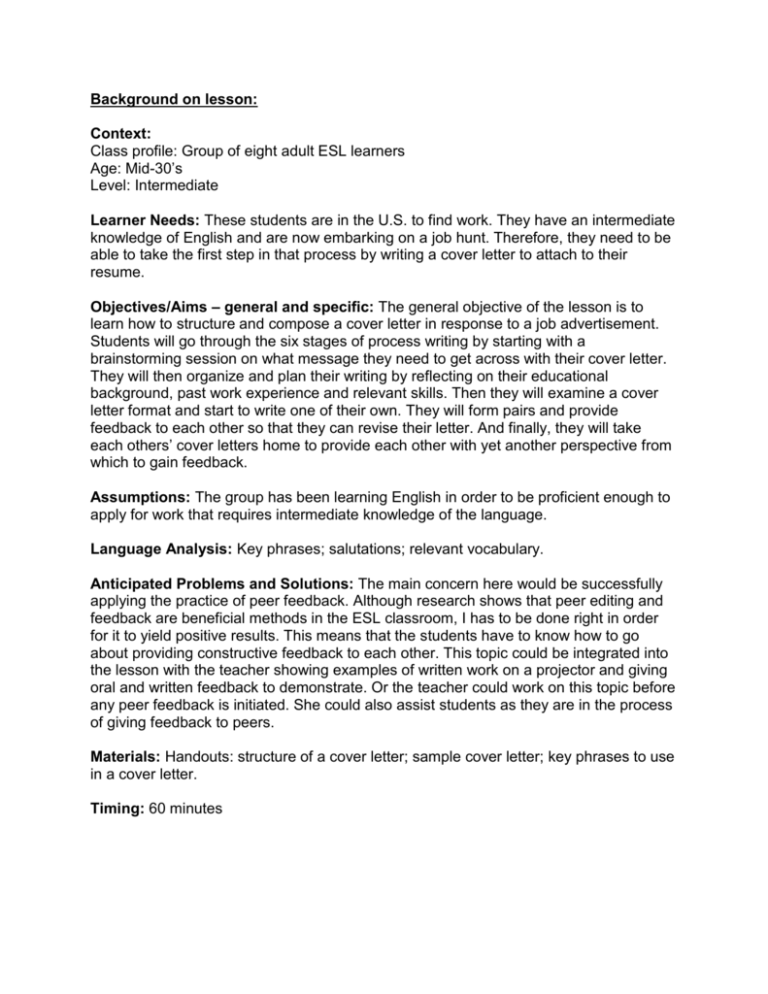
Background on lesson: Context: Class profile: Group of eight adult ESL learners Age: Mid-30’s Level: Intermediate Learner Needs: These students are in the U.S. to find work. They have an intermediate knowledge of English and are now embarking on a job hunt. Therefore, they need to be able to take the first step in that process by writing a cover letter to attach to their resume. Objectives/Aims – general and specific: The general objective of the lesson is to learn how to structure and compose a cover letter in response to a job advertisement. Students will go through the six stages of process writing by starting with a brainstorming session on what message they need to get across with their cover letter. They will then organize and plan their writing by reflecting on their educational background, past work experience and relevant skills. Then they will examine a cover letter format and start to write one of their own. They will form pairs and provide feedback to each other so that they can revise their letter. And finally, they will take each others’ cover letters home to provide each other with yet another perspective from which to gain feedback. Assumptions: The group has been learning English in order to be proficient enough to apply for work that requires intermediate knowledge of the language. Language Analysis: Key phrases; salutations; relevant vocabulary. Anticipated Problems and Solutions: The main concern here would be successfully applying the practice of peer feedback. Although research shows that peer editing and feedback are beneficial methods in the ESL classroom, I has to be done right in order for it to yield positive results. This means that the students have to know how to go about providing constructive feedback to each other. This topic could be integrated into the lesson with the teacher showing examples of written work on a projector and giving oral and written feedback to demonstrate. Or the teacher could work on this topic before any peer feedback is initiated. She could also assist students as they are in the process of giving feedback to peers. Materials: Handouts: structure of a cover letter; sample cover letter; key phrases to use in a cover letter. Timing: 60 minutes Lesson Plan: Stage Aim Procedure Warmer Mats. Focus Time Greetings. T-S 2 Introducing the topic Teacher explains that students will study how to introduce themselves to potential employers through the use of a cover letter. T 2 Group Discussion Teacher and students brainstorm and discuss what things they would need to bring to the attention of potential employers. S 5 Background Information Teacher elicits from students the key phrases they would need to form their cover letters and any key vocabulary. S 5 Opening Sequencing Handouts Hands out a structural outline of a cover letter with instructions and commonly used phrases (i.e. I am writing to you in response to your advertisement for...), forms of salutation, plus a sample cover letter. Pair work Students work in pairs to help each other in forming the structure of their own cover letter based on the handout. 10 Individual Writing Each student fills in their own information to form a draft of a cover letter written in response to an opening for the position they would like to apply for. S-T 10 Pair work Students form pairs and exchange their cover letters. They read each other’s letters and give feedback. Meanwhile, teacher checks on each pair to help them with the process of peer feedback. S-S 10 Individual writing Based on the peer feedback, each person revises their letter. S-S 5 Peer assessment activity As a final activity, students exchange their cover letters by passing them to the person on their left. Each person reads the main paragraph of the letter they have and the class tries to guess what type of work (or what field of work) the owner of the letter is applying for. Students take each others’ letters home to provide more peer feedback. T-S 10 Follow up/ Homework assignment Teacher explains that students will take home the cover letter they have read out and provide peer feedback by pretending to be an employer who has received the letter. They will write down the strengths and weaknesses of the composition together with any structural recommendations. Closure/con clusion 1





